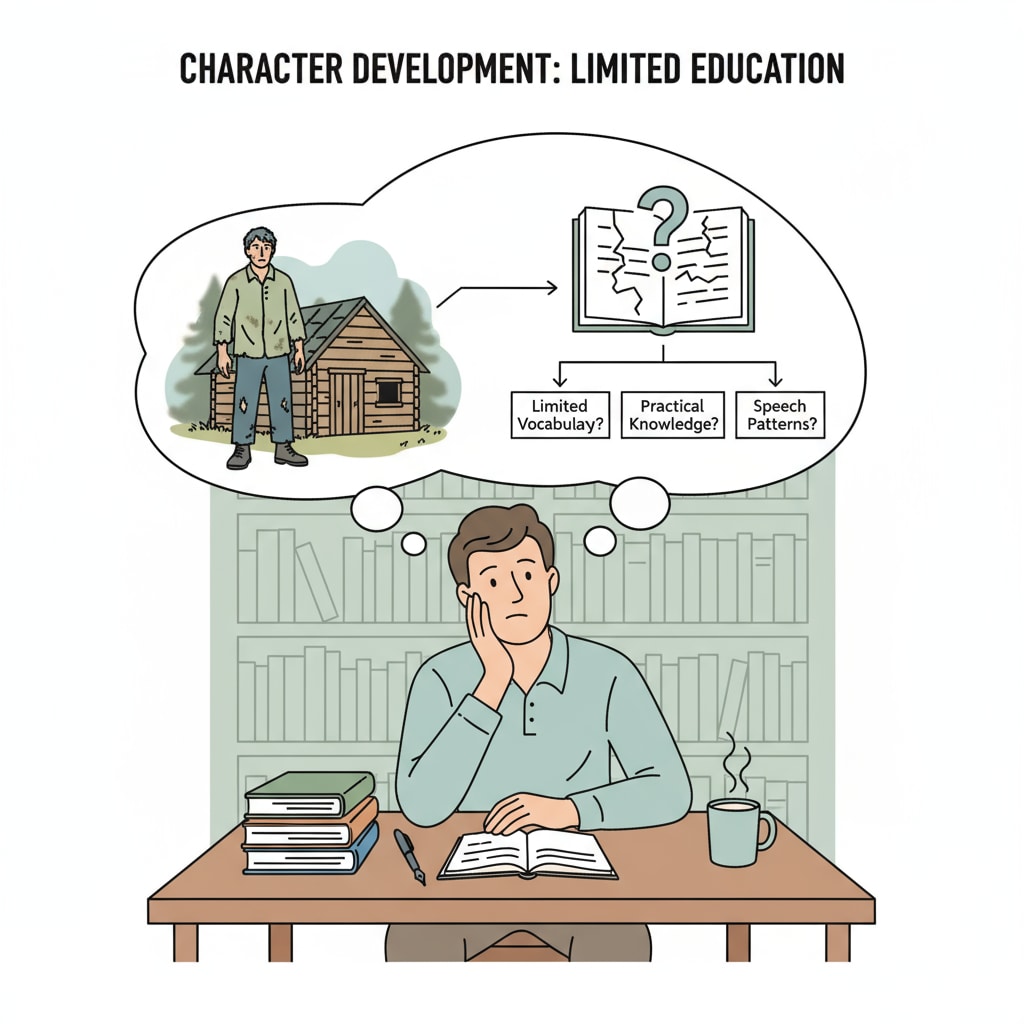In the realm of novel writing, character authenticity and educational background play pivotal roles. Creating characters with limited education requires a nuanced understanding of their language, thought processes, and communication styles. Let’s delve into how to bring these characters to life in a believable manner.

Language Habits of Characters with Limited Education
Characters with limited education often have distinct language habits. For example, they may use more colloquialisms and slang. These are the everyday expressions that are common in their social circles. According to Language and Society on Wikipedia, language is deeply influenced by social context. Such characters might also make frequent grammar errors, not out of carelessness but due to lack of formal instruction. In addition, their vocabulary is likely to be more limited, relying on simple and common words to convey their thoughts.
Thought Processes and Decision-Making
The thought processes of characters with limited education are shaped by their life experiences rather than academic knowledge. They tend to make decisions based on practicality and immediate needs. For instance, when faced with a problem, they might rely on tried-and-true methods from their past rather than complex analytical thinking. As explained in Cognitive Psychology on Britannica, cognitive processes vary depending on one’s educational and life background. Their understanding of the world is often more hands-on and less theoretical.

To maintain both authenticity and readability when writing such characters, authors can use a balance. Simplify the language enough to show the character’s limited education but not to the point where it becomes difficult to understand. Use dialogue and internal monologues to reveal their unique perspectives. By doing so, we can create characters that are both true to their educational background and engaging for the readers.
Readability guidance: Keep paragraphs short to enhance clarity. Use lists to break down key points, like the language habits and thought processes. Minimize passive voice and long sentences. Incorporate transition words such as ‘however’, ‘therefore’, and ‘in addition’ to make the flow smooth.


